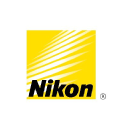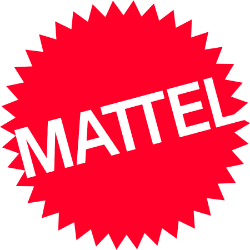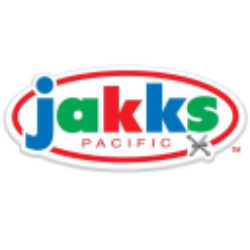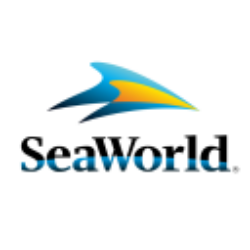NCBDF
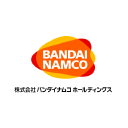
BANDAI NAMCO Holdings Inc.
NCBDF
(2.8)21,20 USD
11.84% ROA
18.18% ROE
20.26x PER
2.304.415.598.622,20 USD
3.23% DER
0.01% Yield
11.22% NPM
BANDAI NAMCO Holdings Inc. Stock Analysis
BANDAI NAMCO Holdings Inc. Fundamental Analysis
Fundamental analysis in stock investing is like studying the foundation of a house before buying it. It involves looking at a company's financial health, like its earnings, assets, and debts, to determine if it's a good investment based on its fundamental strength and potential for growth.
| # | Analysis | Rating |
|---|---|---|
| 1 |
ROA
This stock has a great ability to make a lot of money from the things it owns, which makes it a really good investment for smart investors. |
|
| 2 |
DER
The stock has a minimal amount of debt (4%) relative to its ownership, showcasing a strong financial position and lower risk for investors. |
|
| 3 |
Assets Growth
With continuous growth in revenue over the last five years, this company has proven to be a lucrative investment option, showcasing its strong financial performance. |
|
| 4 |
ROE
The stock's ROE falls within an average range (14.35%), demonstrating satisfactory profitability and efficiency in utilizing shareholders' equity. |
|
| 5 |
Graham Number
The company's Graham number indicates that it is undervalued compared to its stock price, suggesting a potentially favorable investment opportunity. |
|
| 6 |
Dividend Growth
The company's dividend growth has exhibited a remarkable upward trend over the past three years, consistently delivering higher payouts to shareholders. |
|
| 7 |
Dividend
The company has consistently provided dividends over the past three years, indicating a reliable source of income for investors. |
|
| 8 |
Buffet Intrinsic Value
Warren Buffett's formula suggests that the company's stock is undervalued (44.681), making it an appealing investment prospect with its intrinsic value surpassing the current market price. |
|
| 9 |
PBV
The stock's high Price-to-Book Value (P/BV) ratio (3.38x) suggests it's overvalued, potentially making it an expensive investment. |
|
| 10 |
Revenue Growth
Company has experienced no growth in revenue over the past three years, suggesting limited profitability and making it a less desirable investment opportunity. |
|
| 11 |
Net Profit Growth
Throughout the last five years, this company's net profit has remained unchanged, indicating a lack of growth and making it a less favorable investment option. |
BANDAI NAMCO Holdings Inc. Technical Analysis
Technical analysis in stock investing is like reading the patterns on a weather map to predict future weather conditions. It involves studying past stock price movements and trading volumes to make predictions about where a stock's price might go next, without necessarily looking at the company's financial health.
| # | Analysis | Recommendation |
|---|---|---|
| 1 | Awesome Oscillator | Hold |
| 2 | MACD | Buy |
| 3 | RSI | Sell |
| 4 | Stoch RSI | Sell |
BANDAI NAMCO Holdings Inc. Price Chart
Financial Statements
Financial statements are like report cards for companies. They show how much money a company makes (income statement), what it owns and owes (balance sheet), and where it spends its money (cash flow statement), helping stock investors understand if a company is healthy and worth investing in.
Income Statements
An income statement for a company is like a scoreboard for its profits and losses. It shows how much money the company made (revenue) and how much it spent to make that money (expenses), helping stock investors see if a company is making a profit or not.
Revenue in stock investing is the total amount of money a company earns from its sales, and it's a key factor that investors consider to assess a company's financial performance and growth potential.
| Year | Revenue | Growth |
|---|---|---|
| 2006 | 450.829.000.000 | |
| 2007 | 459.132.000.000 | 1.81% |
| 2008 | 460.473.000.000 | 0.29% |
| 2009 | 426.399.000.000 | -7.99% |
| 2010 | 378.547.000.000 | -12.64% |
| 2011 | 394.178.000.000 | 3.97% |
| 2012 | 454.210.000.000 | 13.22% |
| 2013 | 487.241.000.000 | 6.78% |
| 2014 | 507.679.000.000 | 4.03% |
| 2015 | 565.486.000.000 | 10.22% |
| 2016 | 575.504.000.000 | 1.74% |
| 2017 | 620.061.000.000 | 7.19% |
| 2018 | 678.312.000.000 | 8.59% |
| 2019 | 732.347.000.000 | 7.38% |
| 2020 | 723.989.000.000 | -1.15% |
| 2021 | 740.903.000.000 | 2.28% |
| 2022 | 889.270.000.000 | 16.68% |
| 2023 | 1.108.760.000.000 | 19.8% |
| 2023 | 990.089.000.000 | -11.99% |
| 2024 | 1.050.210.000.000 | 5.72% |
| 2025 | 1.122.508.000.000 | 6.44% |
Research and Development Expenses are the costs a company incurs to create and improve its products or services, which can be important for investors to evaluate a company's innovation and potential for future growth.
| Year | Research and Development Expenses | Growth |
|---|---|---|
| 2006 | 0 | |
| 2007 | 0 | 0% |
| 2008 | 0 | 0% |
| 2009 | 0 | 0% |
| 2010 | 0 | 0% |
| 2011 | 0 | 0% |
| 2012 | 0 | 0% |
| 2013 | 16.619.000.000 | 100% |
| 2014 | 16.437.000.000 | -1.11% |
| 2015 | 18.759.000.000 | 12.38% |
| 2016 | 18.194.000.000 | -3.11% |
| 2017 | 17.761.000.000 | -2.44% |
| 2018 | 19.398.000.000 | 8.44% |
| 2019 | 19.811.000.000 | 2.08% |
| 2020 | 19.035.000.000 | -4.08% |
| 2021 | 26.446.000.000 | 28.02% |
| 2022 | 29.494.000.000 | 10.33% |
| 2023 | 0 | 0% |
| 2023 | 30.363.000.000 | 100% |
| 2024 | 32.316.000.000 | 6.04% |
| 2025 | 0 | 0% |
General and Administrative Expenses are the costs a company incurs to run its day-to-day operations, such as office rent, salaries, and utilities, which investors consider to understand a company's overall efficiency and management effectiveness.
| Year | General and Administrative Expenses | Growth |
|---|---|---|
| 2006 | 0 | |
| 2007 | 0 | 0% |
| 2008 | 0 | 0% |
| 2009 | 0 | 0% |
| 2010 | 0 | 0% |
| 2011 | 0 | 0% |
| 2012 | 0 | 0% |
| 2013 | 37.332.000.000 | 100% |
| 2014 | 39.089.000.000 | 4.49% |
| 2015 | 40.442.000.000 | 3.35% |
| 2016 | 97.331.000.000 | 58.45% |
| 2017 | 104.070.000.000 | 6.48% |
| 2018 | 45.738.000.000 | -127.54% |
| 2019 | 49.064.000.000 | 6.78% |
| 2020 | 118.770.000.000 | 58.69% |
| 2021 | 125.703.000.000 | 5.52% |
| 2022 | 147.721.000.000 | 14.91% |
| 2023 | 0 | 0% |
| 2023 | 165.022.000.000 | 100% |
| 2024 | 183.452.000.000 | 10.05% |
| 2025 | 0 | 0% |
EBITDA stands for Earnings Before Interest, Taxes, Depreciation, and Amortization. It is a measure that helps stock investors analyze a company's profitability by looking at its earnings without considering certain expenses. This helps to get a clearer picture of the company's financial performance and its ability to generate cash flow.
| Year | EBITDA | Growth |
|---|---|---|
| 2006 | 55.758.000.000 | |
| 2007 | 67.549.000.000 | 17.46% |
| 2008 | 73.794.000.000 | 8.46% |
| 2009 | 47.996.000.000 | -53.75% |
| 2010 | 26.117.000.000 | -83.77% |
| 2011 | 36.645.000.000 | 28.73% |
| 2012 | 53.614.000.000 | 31.65% |
| 2013 | 69.334.000.000 | 22.67% |
| 2014 | 64.728.000.000 | -7.12% |
| 2015 | 80.427.000.000 | 19.52% |
| 2016 | 71.135.000.000 | -13.06% |
| 2017 | 85.167.000.000 | 16.48% |
| 2018 | 98.760.000.000 | 13.76% |
| 2019 | 105.593.000.000 | 6.47% |
| 2020 | 102.682.000.000 | -2.83% |
| 2021 | 111.647.000.000 | 8.03% |
| 2022 | 153.072.000.000 | 27.06% |
| 2023 | 182.056.000.000 | 15.92% |
| 2023 | 147.575.000.000 | -23.37% |
| 2024 | 187.990.000.000 | 21.5% |
| 2025 | 208.588.000.000 | 9.87% |
Gross profit is the money a company makes from selling its products or services after subtracting the cost of producing or providing them, and it is an important measure for investors to understand a company's profitability.
| Year | Gross Profit | Growth |
|---|---|---|
| 2006 | 156.566.000.000 | |
| 2007 | 168.080.000.000 | 6.85% |
| 2008 | 164.073.000.000 | -2.44% |
| 2009 | 146.023.000.000 | -12.36% |
| 2010 | 128.754.000.000 | -13.41% |
| 2011 | 139.415.000.000 | 7.65% |
| 2012 | 167.502.000.000 | 16.77% |
| 2013 | 183.079.000.000 | 8.51% |
| 2014 | 190.829.000.000 | 4.06% |
| 2015 | 213.113.000.000 | 10.46% |
| 2016 | 202.600.000.000 | -5.19% |
| 2017 | 223.759.000.000 | 9.46% |
| 2018 | 241.582.000.000 | 7.38% |
| 2019 | 262.556.000.000 | 7.99% |
| 2020 | 260.948.000.000 | -0.62% |
| 2021 | 282.006.000.000 | 7.47% |
| 2022 | 356.266.000.000 | 20.84% |
| 2023 | 431.580.000.000 | 17.45% |
| 2023 | 368.656.000.000 | -17.07% |
| 2024 | 370.959.000.000 | 0.62% |
| 2025 | 440.528.000.000 | 15.79% |
Net income in stock investing is like the money a company actually gets to keep as profit after paying all its bills, and it's an important measure to understand how well a company is doing financially.
| Year | Net Profit | Growth |
|---|---|---|
| 2006 | 14.149.000.000 | |
| 2007 | 24.252.000.000 | 41.66% |
| 2008 | 32.679.000.000 | 25.79% |
| 2009 | 11.830.000.000 | -176.24% |
| 2010 | -29.928.000.000 | 139.53% |
| 2011 | 1.848.000.000 | 1719.48% |
| 2012 | 19.303.000.000 | 90.43% |
| 2013 | 32.383.000.000 | 40.39% |
| 2014 | 25.054.000.000 | -29.25% |
| 2015 | 37.588.000.000 | 33.35% |
| 2016 | 34.583.000.000 | -8.69% |
| 2017 | 44.159.000.000 | 21.69% |
| 2018 | 54.109.000.000 | 18.39% |
| 2019 | 63.383.000.000 | 14.63% |
| 2020 | 57.665.000.000 | -9.92% |
| 2021 | 48.894.000.000 | -17.94% |
| 2022 | 92.752.000.000 | 47.29% |
| 2023 | 121.524.000.000 | 23.68% |
| 2023 | 90.345.000.000 | -34.51% |
| 2024 | 101.493.000.000 | 10.98% |
| 2025 | 136.204.000.000 | 25.48% |
EPS, or earnings per share, is a measure that shows how much profit a company has earned for each outstanding share of its stock, and it is important for stock investors as it helps understand the profitability of a company and compare it with other companies in the market.
| Year | Earning per Share (EPS) | Growth |
|---|---|---|
| 2006 | 18 | |
| 2007 | 32 | 41.94% |
| 2008 | 43 | 26.19% |
| 2009 | 16 | -180% |
| 2010 | -41 | 136.59% |
| 2011 | 3 | 2150% |
| 2012 | 29 | 92.86% |
| 2013 | 49 | 42.86% |
| 2014 | 38 | -28.95% |
| 2015 | 57 | 33.33% |
| 2016 | 52 | -9.62% |
| 2017 | 67 | 22.39% |
| 2018 | 82 | 18.29% |
| 2019 | 96 | 14.58% |
| 2020 | 87 | -10.34% |
| 2021 | 74 | -17.57% |
| 2022 | 141 | 47.14% |
| 2023 | 0 | 0% |
| 2023 | 137 | 100% |
| 2024 | 154 | 11.11% |
| 2025 | 208 | 26.44% |
Cashflow Statements
Cashflow statements show the movement of money in and out of a company, helping stock investors understand how much money a company makes and spends. By examining cashflow statements, investors can assess if a company is generating enough cash to pay its bills, invest in growth, and provide returns to stockholders.
Free cash flow is the leftover cash that a company generates after covering its operating expenses and capital expenditures, which is important for stock investors as it shows how much money a company has available to invest in growth, pay dividends, or reduce debt.
| Year | Free Cashflow | Growth |
|---|---|---|
| 2006 | 18.681.000.000 | |
| 2007 | 27.974.000.000 | 33.22% |
| 2008 | 20.331.000.000 | -37.59% |
| 2009 | 8.490.000.000 | -139.47% |
| 2010 | 574.000.000 | -1379.09% |
| 2011 | 13.249.000.000 | 95.67% |
| 2012 | 24.583.000.000 | 46.11% |
| 2013 | 22.880.000.000 | -7.44% |
| 2014 | 25.690.000.000 | 10.94% |
| 2015 | 33.333.000.000 | 22.93% |
| 2016 | 38.843.000.000 | 14.19% |
| 2017 | 49.316.000.000 | 21.24% |
| 2018 | 6.896.000.000 | -615.14% |
| 2019 | 64.471.000.000 | 89.3% |
| 2020 | 20.503.000.000 | -214.45% |
| 2021 | 36.635.000.000 | 44.03% |
| 2022 | 94.415.000.000 | 61.2% |
| 2023 | 0 | 0% |
| 2023 | 61.818.000.000 | 100% |
| 2024 | 0 | 0% |
Operating cash flow represents the cash generated or consumed by a company's day-to-day operations, excluding external investing or financing activities, and is crucial for stock investors as it shows how much cash a company is generating from its core business operations.
| Year | Operating Cashflow | Growth |
|---|---|---|
| 2006 | 31.808.000.000 | |
| 2007 | 42.493.000.000 | 25.15% |
| 2008 | 35.000.000.000 | -21.41% |
| 2009 | 19.301.000.000 | -81.34% |
| 2010 | 10.581.000.000 | -82.41% |
| 2011 | 22.561.000.000 | 53.1% |
| 2012 | 39.112.000.000 | 42.32% |
| 2013 | 36.411.000.000 | -7.42% |
| 2014 | 41.291.000.000 | 11.82% |
| 2015 | 50.103.000.000 | 17.59% |
| 2016 | 58.049.000.000 | 13.69% |
| 2017 | 64.136.000.000 | 9.49% |
| 2018 | 55.138.000.000 | -16.32% |
| 2019 | 79.811.000.000 | 30.91% |
| 2020 | 43.131.000.000 | -85.04% |
| 2021 | 60.483.000.000 | 28.69% |
| 2022 | 121.212.000.000 | 50.1% |
| 2023 | 0 | 0% |
| 2023 | 95.625.000.000 | 100% |
| 2024 | 0 | 0% |
Capex, short for capital expenditures, refers to the money a company spends on acquiring or upgrading tangible assets like buildings, equipment, or technology, which is important for stock investors as it indicates how much a company is investing in its infrastructure to support future growth and profitability.
| Year | Capital Expenditure | Growth |
|---|---|---|
| 2006 | 13.127.000.000 | |
| 2007 | 14.519.000.000 | 9.59% |
| 2008 | 14.669.000.000 | 1.02% |
| 2009 | 10.811.000.000 | -35.69% |
| 2010 | 10.007.000.000 | -8.03% |
| 2011 | 9.312.000.000 | -7.46% |
| 2012 | 14.529.000.000 | 35.91% |
| 2013 | 13.531.000.000 | -7.38% |
| 2014 | 15.601.000.000 | 13.27% |
| 2015 | 16.770.000.000 | 6.97% |
| 2016 | 19.206.000.000 | 12.68% |
| 2017 | 14.820.000.000 | -29.6% |
| 2018 | 48.242.000.000 | 69.28% |
| 2019 | 15.340.000.000 | -214.49% |
| 2020 | 22.628.000.000 | 32.21% |
| 2021 | 23.848.000.000 | 5.12% |
| 2022 | 26.797.000.000 | 11% |
| 2023 | 0 | 0% |
| 2023 | 33.807.000.000 | 100% |
| 2024 | 0 | 0% |
Balance Sheet
Balance sheets provide a snapshot of a company's financial health and its assets (such as cash, inventory, and property) and liabilities (like debts and obligations) at a specific point in time. For stock investors, balance sheets help assess the company's overall worth and evaluate its ability to meet financial obligations and support future growth.
Equity refers to the ownership interest or stake that shareholders have in a company, representing their claim on its assets and earnings after all debts and liabilities are paid.
| Year | Equity | Growth |
|---|---|---|
| 2006 | 252.243.000.000 | |
| 2007 | 284.254.000.000 | 11.26% |
| 2008 | 289.944.000.000 | 1.96% |
| 2009 | 260.579.000.000 | -11.27% |
| 2010 | 229.012.000.000 | -13.78% |
| 2011 | 213.693.000.000 | -7.17% |
| 2012 | 213.125.000.000 | -0.27% |
| 2013 | 248.768.000.000 | 14.33% |
| 2014 | 267.950.000.000 | 7.16% |
| 2015 | 303.511.000.000 | 11.72% |
| 2016 | 317.304.000.000 | 4.35% |
| 2017 | 348.784.000.000 | 9.03% |
| 2018 | 387.354.000.000 | 9.96% |
| 2019 | 429.644.000.000 | 9.84% |
| 2020 | 454.684.000.000 | 5.51% |
| 2021 | 511.433.000.000 | 11.1% |
| 2022 | 584.233.000.000 | 12.46% |
| 2023 | 688.829.000.000 | 15.18% |
| 2023 | 652.133.000.000 | -5.63% |
| 2024 | 699.823.000.000 | 6.81% |
| 2025 | 708.908.000.000 | 1.28% |
Assets represent the valuable resources that a company owns, such as cash, inventory, property, and equipment, and understanding a company's assets helps investors assess its value and potential for generating future profits.
| Year | Assets | Growth |
|---|---|---|
| 2006 | 386.650.000.000 | |
| 2007 | 408.490.000.000 | 5.35% |
| 2008 | 413.023.000.000 | 1.1% |
| 2009 | 363.444.000.000 | -13.64% |
| 2010 | 325.935.000.000 | -11.51% |
| 2011 | 308.269.000.000 | -5.73% |
| 2012 | 342.171.000.000 | 9.91% |
| 2013 | 374.203.000.000 | 8.56% |
| 2014 | 405.092.000.000 | 7.63% |
| 2015 | 441.763.000.000 | 8.3% |
| 2016 | 448.336.000.000 | 1.47% |
| 2017 | 488.032.000.000 | 8.13% |
| 2018 | 540.490.000.000 | 9.71% |
| 2019 | 612.955.000.000 | 11.82% |
| 2020 | 619.819.000.000 | 1.11% |
| 2021 | 732.782.000.000 | 15.42% |
| 2022 | 862.650.000.000 | 15.05% |
| 2023 | 974.757.000.000 | 11.5% |
| 2023 | 926.358.000.000 | -5.22% |
| 2024 | 971.838.000.000 | 4.68% |
| 2025 | 973.318.000.000 | 0.15% |
Liabilities refer to the financial obligations or debts that a company owes to creditors or external parties, and understanding a company's liabilities is important for investors as it helps assess the company's financial risk and ability to meet its obligations.
| Year | Liabilities | Growth |
|---|---|---|
| 2006 | 143.043.000.000 | |
| 2007 | 124.236.000.000 | -15.14% |
| 2008 | 123.079.000.000 | -0.94% |
| 2009 | 102.865.000.000 | -19.65% |
| 2010 | 96.923.000.000 | -6.13% |
| 2011 | 94.576.000.000 | -2.48% |
| 2012 | 129.046.000.000 | 26.71% |
| 2013 | 125.435.000.000 | -2.88% |
| 2014 | 137.142.000.000 | 8.54% |
| 2015 | 138.252.000.000 | 0.8% |
| 2016 | 131.032.000.000 | -5.51% |
| 2017 | 139.247.000.000 | 5.9% |
| 2018 | 153.134.000.000 | 9.07% |
| 2019 | 183.309.000.000 | 16.46% |
| 2020 | 165.133.000.000 | -11.01% |
| 2021 | 221.346.000.000 | 25.4% |
| 2022 | 278.413.000.000 | 20.5% |
| 2023 | 285.928.000.000 | 2.63% |
| 2023 | 274.222.000.000 | -4.27% |
| 2024 | 272.013.000.000 | -0.81% |
| 2025 | 264.409.000.000 | -2.88% |
BANDAI NAMCO Holdings Inc. Financial Ratio (TTM)
Valuation Metrics
- Revenue per Share
- 1690.69
- Net Income per Share
- 173.89
- Price to Earning Ratio
- 20.26x
- Price To Sales Ratio
- 2.08x
- POCF Ratio
- 0
- PFCF Ratio
- 0
- Price to Book Ratio
- 3.25
- EV to Sales
- 1.82
- EV Over EBITDA
- 13.52
- EV to Operating CashFlow
- 0
- EV to FreeCashFlow
- 0
- Earnings Yield
- 0.05
- FreeCashFlow Yield
- 0
- Market Cap
- 2.304,42 Bil.
- Enterprise Value
- 2.010,35 Bil.
- Graham Number
- 2058.61
- Graham NetNet
- 316.83
Income Statement Metrics
- Net Income per Share
- 173.89
- Income Quality
- 0
- ROE
- 0.16
- Return On Assets
- 0.12
- Return On Capital Employed
- 0.18
- Net Income per EBT
- 0.69
- EBT Per Ebit
- 1.36
- Ebit per Revenue
- 0.12
- Effective Tax Rate
- 0.31
Margins
- Sales, General, & Administrative to Revenue
- 0
- Research & Developement to Revenue
- 0.02
- Stock Based Compensation to Revenue
- 0
- Gross Profit Margin
- 0.37
- Operating Profit Margin
- 0.12
- Pretax Profit Margin
- 0.16
- Net Profit Margin
- 0.11
Dividends
- Dividend Yield
- 0
- Dividend Yield %
- 0.01
- Payout Ratio
- 0
- Dividend Per Share
- 0.41
Operating Metrics
- Operating Cashflow per Share
- 0
- Free CashFlow per Share
- 0
- Capex to Operating CashFlow
- 0
- Capex to Revenue
- 0
- Capex to Depreciation
- 0
- Return on Invested Capital
- 0.1
- Return on Tangible Assets
- 0.12
- Days Sales Outstanding
- 47.1
- Days Payables Outstanding
- 57.32
- Days of Inventory on Hand
- 72.11
- Receivables Turnover
- 7.75
- Payables Turnover
- 6.37
- Inventory Turnover
- 5.06
- Capex per Share
- 0
Balance Sheet
- Cash per Share
- 449,51
- Book Value per Share
- 1.083,65
- Tangible Book Value per Share
- 1064.62
- Shareholders Equity per Share
- 1083.14
- Interest Debt per Share
- 35.42
- Debt to Equity
- 0.03
- Debt to Assets
- 0.02
- Net Debt to EBITDA
- -1.98
- Current Ratio
- 2.7
- Tangible Asset Value
- 696,46 Bil.
- Net Current Asset Value
- 375,02 Bil.
- Invested Capital
- 541442000000
- Working Capital
- 402,77 Bil.
- Intangibles to Total Assets
- 0.01
- Average Receivables
- 129,93 Bil.
- Average Payables
- 105,72 Bil.
- Average Inventory
- 140856000000
- Debt to Market Cap
- 0.01
Dividends
Dividends in stock investing are like rewards that companies give to their shareholders. They are a portion of the company's profits distributed to investors, typically in the form of cash payments, as a way for them to share in the company's success.
| Year | Dividends | Growth |
|---|---|---|
| 2014 | 0 | |
| 2015 | 0 | 0% |
| 2016 | 0 | 0% |
| 2017 | 0 | 0% |
| 2018 | 1 | 0% |
| 2019 | 0 | 0% |
| 2020 | 1 | 100% |
| 2021 | 1 | 0% |
| 2022 | 1 | 100% |
| 2023 | 1 | 0% |
| 2024 | 0 | 0% |
| 2025 | 0 | 0% |
BANDAI NAMCO Holdings Inc. Profile
About BANDAI NAMCO Holdings Inc.
BANDAI NAMCO Holdings Inc. develops entertainment-related products and services worldwide. Its Toys and Hobby segment offers toys, capsule and candy toys, cards, confectionery, food, apparel, sundries, plastic models, figures, communications and peripheral equipment, consumer electronics, character-based products, pachinko and pachislot machines, medical and electronic-related equipment, playground equipment, bicycles, furniture, visual, RC and robot toys, molds, stationery, prizes, and other products. This segment is also involved in the contract operations for inspecting and testing; and import and export of toys, etc. The company's Network Entertainment segment plans, develops, and distributes network content, as well as home video games, live events, machines, Internet-based online games, other software and services, amusement machines, etc.; and provides advertising, promotion, online video distribution and games platforms, communication and related tools, and shared services, as well as visual substrates. Its Real Entertainment segment plans, produces, and sells amusement machines; plans and operates amusement facilities, etc.; and provides after-sales services and stocks and sells pre-owned amusement machines and products. The company's Visual and Music Production segment offers visual and music content and package software, and audio engineering services; conducts live entertainment operations; plans and produces animation; manages affiliated artists; operates fan clubs; produces visual products related to live performances, events, and music; plans, produces, and sells goods, tickets, etc. Its IP Creation segment plans and produces animations, labels, events, etc., as well as music related to animations; manages and administers copyrights and other rights. The company was formerly known as NAMCO BANDAI Holdings, Inc. and changed its name to BANDAI NAMCO Holdings Inc. in June 2014. The company was founded in 2005 and is headquartered in Tokyo, Japan.
- CEO
- Mr. Masaru Kawaguchi
- Employee
- 11.159
- Address
-
BANDAI NAMCO miraikenkyusho
Tokyo, 108-0014
BANDAI NAMCO Holdings Inc. Executives & BODs
| # | Name | Age |
|---|---|---|
| 1 |
Mr. Koji Hamano General Manager of Human Resources Administrative Headquarters |
70 |
| 2 |
Mr. Nobuhiko Momoi GM of Group Business Strategy Department & Director |
70 |
| 3 |
Mr. Masaru Kawaguchi President & Representative Director |
70 |
| 4 |
Mr. Shukuo Ishikawa Chairman and President of Namco Bandai Games Inc |
70 |
| 5 |
Mr. Yuji Asako Chief Financial Officer, Chief Information Security Officer, Chief Sustainability Officer & Director |
70 |
| 6 |
Mr. Shuji Ohtsu Chief Information Officer & Part-Time Director |
70 |






